Igor Stravinsky
Story
Igor Fyodorovitch Stravinsky (June 17, 1882 – April 6, 1971) was a composer of modern classical music. He wrote works in the neo-classical and serialist styles, but he is best known for two works from his earlier, Russian period: Le Sacre du printemps (The Rite of Spring) and L’Oiseau de Feu (The Firebird). For some, these ballets practically reinvented the genre. Stravinsky also wrote in a broad spectrum of ensemble combinations and classical forms. His oeuvre included everything from symphonies to piano miniatures.
Stravinsky also achieved fame as a pianist and conductor, often at the premieres of his own works. He was also a writer. With the help of his protégé Robert Craft, who helped with the composer’s English grammar, Stravinsky composed a theoretic work entitled Poetics of Music. In it, he famously claimed that music was incapable of ‘expressing anything but itself’. Craft also transcribed several interviews with the composer, which were published as Conversations with Stravinsky.
A quintessentially cosmopolitan Russian, Stravinsky was one of the most authoritative composers in 20th century music, both in the West and in his native land. He was named by Time magazine as one of the most influential people of the century.
Stravinsky was born in Oranienbaum (now Lomonosov), near St. Petersburg, Russia. Brought up in an apartment in St. Petersburg and dominated by his father and elder brother, Stravinsky’s early childhood was a mix of experience that hinted little at the cosmopolitan artist he was to become. Though his father was a bass singer at the Mariinsky Theater in St. Petersburg, Stravinsky originally studied to be a lawyer. Composition came later. In 1902, at the age of 20, Stravinsky became the pupil of Rimsky-Korsakov, probably the leading Russian composer of the time.
Stravinsky left Russia for the first time in 1910, going to Paris to attend the premiere of his ballet L’Oiseau de Feu (The Firebird). During his stay in the city, he composed three major works for the Ballets Russes—L’Oiseau de Feu, Petroushka (1911), and Le Sacre du printemps (The Rite of Spring) (1913). The ballets trace his stylistic development: from the L’Oiseau de Feu, whose style draws largely on Tchaikovsky, Glazunov and Rimsky-Korsakov, to Petroushka’s emphasis on bitonality, and finally to the savage polyphonic dissonance of Le Sacre du printemps. As he himself said, with these premieres his intention was ’to send them all to hell’. (He succeeded: the 1913 première of Le Sacre du printemps turned into a riot.)
Stravinsky displayed an inexhaustible desire to learn and explore art, literature, and life. This desire manifested itself in several of his Paris collaborations. Not only was he the principal composer for Sergei Diaghilev’s Ballet Russes, but Stravinsky also collaborated with Pablo Picasso (Pulcinella, 1920), Jean Cocteau (Oedipus Rex, 1927) and George Balanchine (Apollon Musagete, 1928).
Stravinsky and collaborated on Pulcinella in . Picasso took the opportunity to make several sketches of the composer.
Stravinsky and Pablo Picasso collaborated on Pulcinella in 1920. Picasso took the opportunity to make several sketches of the composer.
Relatively short of stature and not conventionally handsome, Stravinsky was nevertheless photogenic, as many pictures show. Although a notorious philanderer (even rumoured to have affairs with high-class partners such as Coco Chanel) Stravinsky was also a family man who devoted considerable amounts of his time and expenditure to his sons and daughters. He was still young when he married his cousin Katerina Nossenko, who he had known since early childhood, on 23 January 1906. Their marriage endured for 33 years, but the true love of his life, and partner until his death, was his second wife Vera de Bosset.
When Stravinsky met Vera in the early 1920s she was married to the painter and stage designer Serge Sudeikin, but they soon began an affair which led to her leaving her husband. From then until the death of Katerina in 1939 Stravinsky led a deft double-life, spending some of his time with his first family and the rest with Vera. Katerina soon learned of the relationship and accepted it as inevitable and permanent. After her death Stravinsky and Vera were married in New York where they had gone from France to escape the war in 1940.
Patronage too was never far away. In the early 1920s Leopold Stokowski was able to give Stravinsky regular support through a pseudonymous ‘benefactor’. The composer was also able to attract commissions: most of his work from The Firebird onwards was written for specific occasions and paid for generously.
Stravinsky proved adept at playing the part of ‘man of the world’, acquiring a keen instinct for business matters and appearing relaxed and comfortable in many of the world’s major cities. Paris, Venice, Berlin, London and New York all hosted successful appearances as pianist and conductor. Most people who knew him through dealings connected with performances spoke of him as polite, courteous and helpful. For example, Otto Klemperer, who knew Schoenberg well, said that he always found Stravinsky much more co-operative and easy to deal with. At the same time he had a disregard of his social inferiors: Robert Craft was embarrassed by his habit of tapping a glass with a fork and loudly demanding attention in restaurants.
Eventually Stravinsky’s music was noticed by Serge Diaghilev, the director of the Ballets Russes in Paris. He comissioned Stravinsky to write a ballet for his theater; so in 1911, Stravinsky traveled to Paris. That ballet ended up being the famous L’Oiseau de Feu. However, because of World War I and the October Revolution in Russia he moved to Switzerland in 1914. He returned to Paris in 1920 to write more ballets as well as many other works. He moved to the United States in 1939 and became a naturalized citizen in 1945. He continued to live in the United States until his death in 1971, unsuccessfully writing music for films. Stravinsky had adapted to life in France, but moving to America aged 58 was a very different prospect. For a time he preserved a ring of emigré Russian friends and contacts, but eventually realised that this would not sustain his intellectual and professional life in the USA. When he planned to write an opera with W. H. Auden, the need to acquire more familiarity with the English-speaking world coincided with his meeting the conductor and musicologist Robert Craft. Craft lived with Stravinsky until his death, acting as interpreter, chronicler, assistant conductor and factotum for countless musical and social tasks.
Stravinsky’s taste in literature was wide and reflected his constant desire for new discoveries. The texts and literary sources for his work began with a period of interest in Russian folklore, progressed to classical authors and the Latin liturgy, and moved on to contemporary France (André Gide, in Persephone) and eventually English literature: Auden, Eliot, and medieval English verse. At the end of his life he was even setting Hebrew scripture in Abraham and Isaac.
In 1962 he accepted an invitation to return to Russia for a series of concerts, but remained an emigre firmly based in the West.
He died in New York City on April 6, 1971 at the age of 89 and was buried in Venice on the cemetery island of San Michele. His grave is close to the tomb of his early collaborator Diaghilev. Stravinsky’s life had encompassed most of the 20th Century, including many of its modern classical music styles, and he influenced composers both during and after his lifetime. He has a Star on the Hollywood Walk of Fame at 6340 Hollywood Boulevard.
Details
- Composer
- Igor Stravinsky
- Date of birth
- June 17, 1882
- Nationality
- Russian/American
- Albums
- 9
- Tracks
- 79
9 albums
-

Erik Satie, Francis Poulenc and Igor Stravinsky
3x7, Stravinsky, Poulenc, Satie, Septets
-

Camille Saint-Saëns, Maurice Ravel and 6 others
Famous Works for Piano Duo
-

Alexander Scriabin, Igor Stravinsky and Benjamin Britten
Fratta: Orchestral Music by Stravinsky, Britten & Scriabin
-
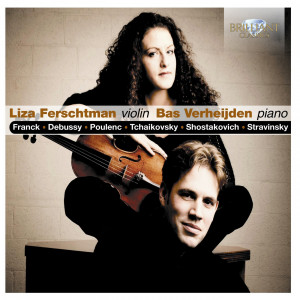
Piotr Ilyich Tchaikovsky, Dmitri Shostakovich and 5 others
Liza Ferschtman
-
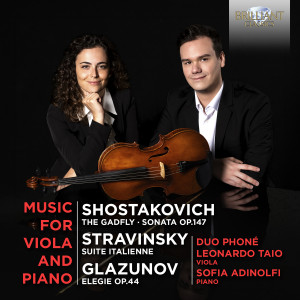
Alexander Glazunov, Dmitri Shostakovich and Igor Stravinsky
Music for Viola and Piano by Shostakovich, Stravinksy, Glazunov
-

Max Reger, Igor Stravinsky and 5 others
Reger Collection
-
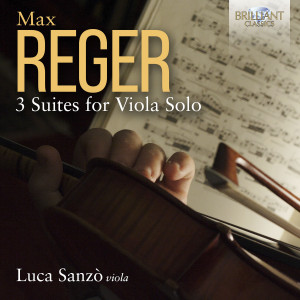
Max Reger, Igor Stravinsky and 3 others
Reger: 3 Suites for Viola Solo
-
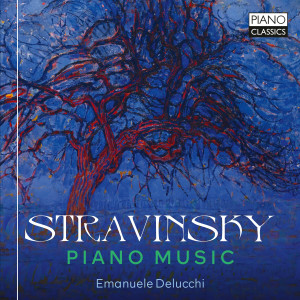
Igor Stravinsky
Stravinsky: Piano Music
-
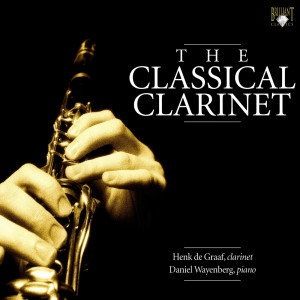
Camille Saint-Saëns, Felix Mendelssohn and 10 others
The Classical Clarinet
